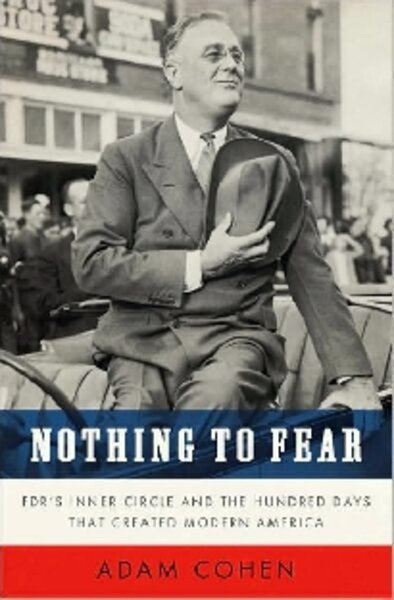Nothing to Fear
Loading...
Franklin Delano Roosevelt faced extraordinary economic challenges when he assumed the presidency of the United States in March 1933. The nation was stuck in a seemingly endless depression, unemployment stood at 25 percent, and many governors had declared “bank holidays” to prevent bank closings.
Roosevelt promised “bold, consistent experimentation” and said that his policy would be to “try something and if that doesn’t work, try something else.”
He meant it. In just 100 days, his new administration advanced a series of initiatives that gave the federal government a direct role in managing the economy. The steps he took during this brief period permanently transformed the political landscape and American society.
Time has dimmed the memories of the crises Roosevelt confronted and legend has obscured the day-to-day events.
Now, as a new US president takes office amid a welter of dire economic problems, Nothing to Fear, a fascinating new book by Adam Cohen describes this watershed in American history.
Cohen makes clear that – regardless of what we might think today – Roosevelt did not have a grand plan when he campaigned for office. After the election, President Hoover tried, during the five long months between the election and inauguration, to get Roosevelt to adopt his policies. Correctly fearing that he would be locked in if he accepted Hoover’s narrow and restrictive policies, Roosevelt declined to work with his predecessor.
But, unlike today, there was no large transition team generating ideas for a new administration. As a result, almost no planning was done before Roosevelt took the oath of office.
Even those most knowledgeable about American politics will be surprised by some parts of the story.
The Emergency Banking Act, for example, was Roosevelt’s first major proposal. Designed to stabilize the nation’s banks, the bill was drafted by two Roosevelt staffers and – surprisingly – three of Herbert Hoover’s former aides.
The Hoover men had vigorously urged their boss to take strong action on the banking crisis before he left office. They could not persuade him, but their ideas found a ready audience with the new administration.
They worked around the clock to help Roosevelt’s team design a plan. One copy of the bill was sent to Capitol Hill. It was signed into law nine hours later.
Another surprise: The New Deal began with aggressive steps to reduce federal spending. Roosevelt was, by nature, a fiscal conservative and throughout the campaign he promised to reign in federal spending.
The second piece of legislation he advanced – the Economy Act – gave the president virtually unlimited authority to reduce federal salaries and slash veterans’ benefits. Like the Banking Act, it was approved immediately and almost without opposition. As soon as it became law, Roosevelt began to cut spending. Not surprisingly, the cuts proved controversial and were eventually reversed – but only after angering veterans and civil servants.
So the New Deal – and the beginning of big government in the US – actually began with laws designed to rescue ailing banks and cut federal spending. The well-known legislative landmarks of the Hundred Days – such as the Agricultural Adjustment Act, Civilian Conservation Corps, the National Industrial Recovery Act, and the Federal Emergency Relief Act – were not the first proposals Roosevelt put forward.
It is not easy to describe a brief period during which so many things were happening simultaneously. Cohen structures his book chronologically and organizes it around biographies of five key FDR aides.
They were, to put it mildly, a diverse group. Lewis Douglas, the conservative budget director, wanted above all else to reduce spending. Raymond Moley was a “cerebral, strategic” Columbia University professor who collected and organized ideas for Roosevelt. Despite their crucial role early in the Hundred Days, both eventually fell out of favor and denounced the New Deal.
The others were liberals who remained loyal until the end. Henry Wallace, a farmer and journalist from Iowa, was in charge of reversing the decade-long decline in farm prices. He became vice president in Roosevelt’s third term and eventually Commerce secretary.
A hard-working, disheveled New York social worker named Harry Hopkins started off administering unemployment relief efforts. During World War II he became FDR’s closest advisor.
But the most influential may have been Labor Secretary Frances Perkins. She brought a clear, expansive agenda to her new post which included unemployment relief, funding for large-scale public works projects, minimum-wage and maximum-hours legislation, and old-age insurance. Despite great personal sorrow and extraordinary challenges as the nation’s first female cabinet secretary, she saw all of her initial priorities enacted into law.
Cohen’s book may well renew interest in this seminal figure.
Cohen, an editorial writer at The New York Times, makes extensive use of both primary and secondary materials to unfold the clear, compelling story of how the circumstances of the nation – together with the character of its political leaders – reshaped American society in so brief period of time.
Terry Hartle is vice president of government relations for the American Council on Education.






